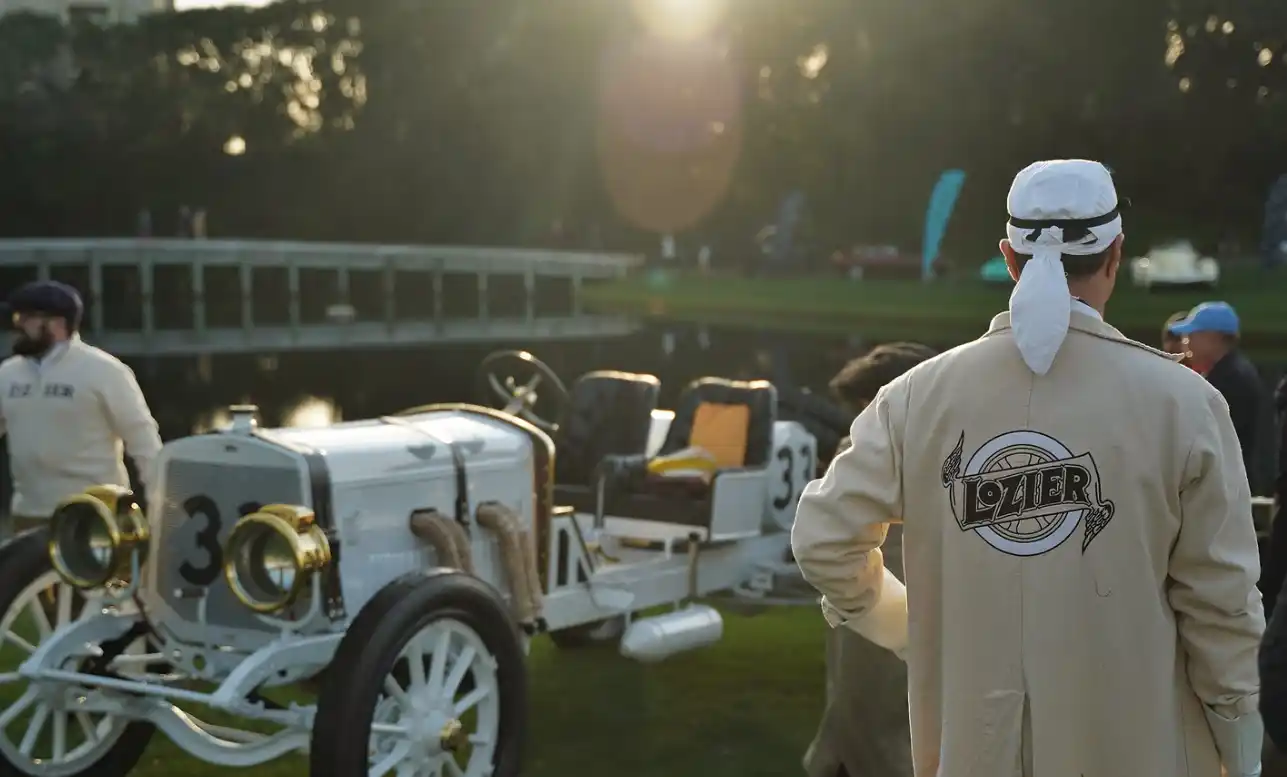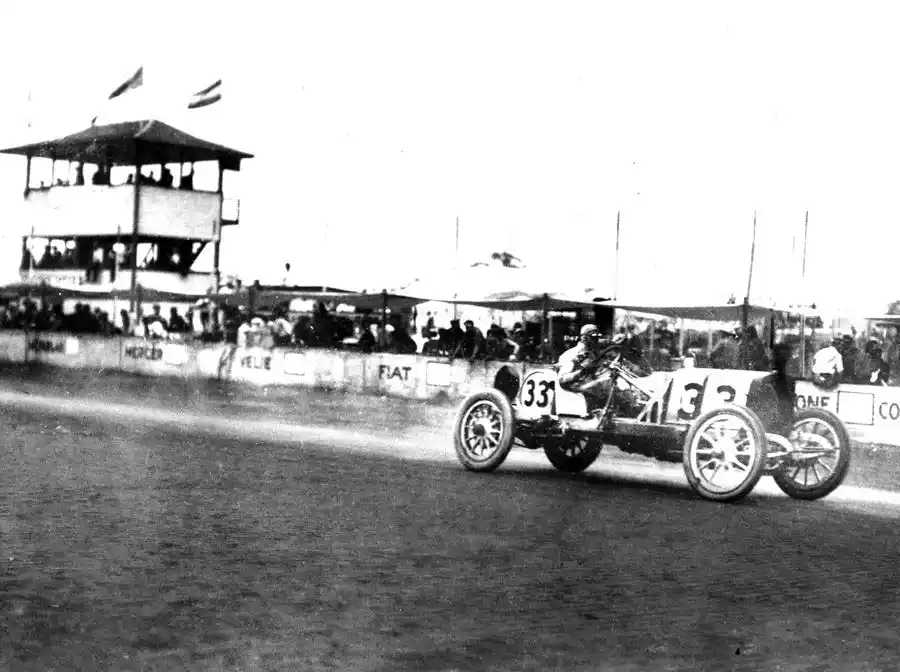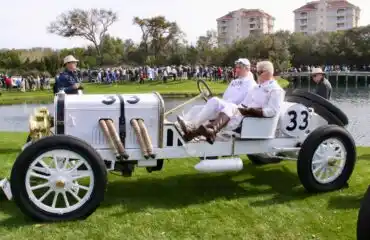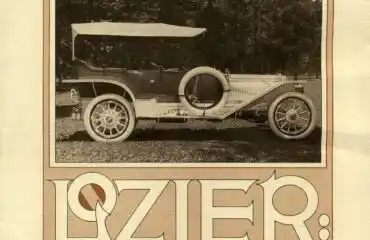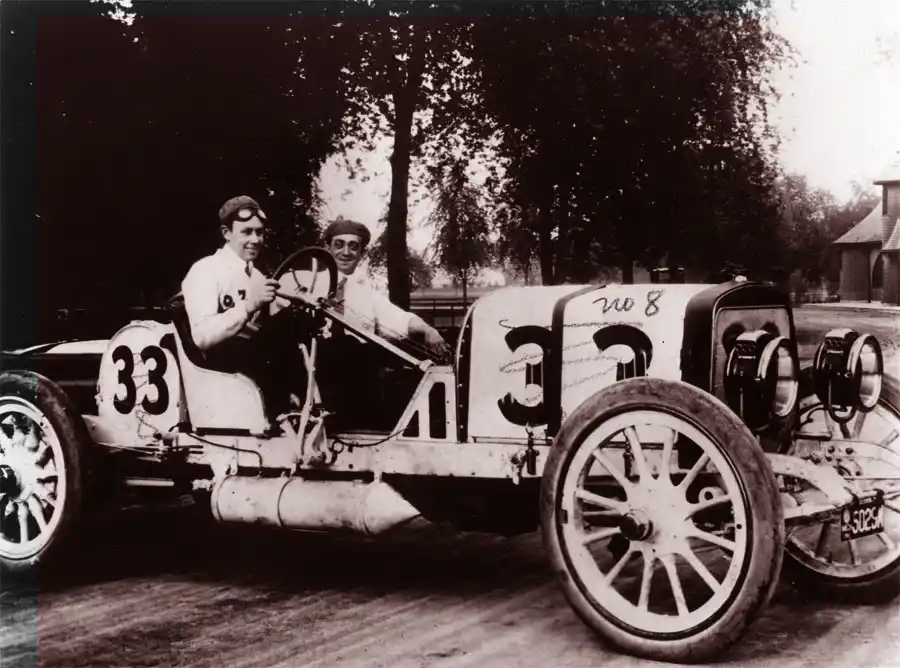
The Indianapolis Motor Speedway, known as the Brickyard, was constructed in 1909 and was the second purpose-built, banked oval racing circuit after Brooklands. During this era, most racing was done on horse tracks and public roads, which were both dangerous and ill-suited for spectating. Indianapolis businessman Carl G. Fisher envisioned a circular track 3 to 5 miles long that would allow manufacturers to test their cars at sustained speeds, give drivers an opportunity to explore their limitations, and the spectators an opportunity to watch the entire event. His plans were both reinforced and perfected after visiting the banked Brooklands circuit outside London in 1907.
Fisher selected Pressley Farm as the location for the speedway. It had 328 acres and was located 5 miles outside Indianapolis. Along with Frank W. Wheeler, the property was acquired for $72,000. The Indianapolis Motor Speedway Company was incorporated on March 20th of 1909 with funding from Fisher, Allison, Wheeler and Arthur Newby.
The planned 3-mile oval with a 2-mile road course was downsized to a 2.5-mile oval which left room for the grandstands. Two months before the oval was completed, the first competition held at the speedway was a helium gas-filled balloon competition on Saturday, June 5, 1909. The first motorsport event was seven motorcycle races, held on August 14th of 1909. On August 19th of that year, fifteen carmakers’ teams began practice at the track for the first 250-mile race. Four vehicles were able to finish the race, setting two land speed records along the way, but at the cost of two lives and several injuries. After additional deaths, accidents and injuries at the track, the AAA boycotting future events until improvements were made.
Fisher and his partners investigated bricks, concrete, and paving of the surfaces. Automobiles were still in their infancy and the longevity, feasibility, and traction from each of these surfaces will still not known. Less than a month after the first car races, work began on repaving the track. The 3.2 million 10-pound bricks were hand-laid, and the completed project earned the track the nickname The Brickyard.
Races were run in 1909 and 1910, and in 1911 it was decided to move to a single race per year. The first 500-mile race was held on Memorial Day, May 30, 1911, and it is estimated that 80,000 spectators witnessed the event. Forty cars competed with the car driven by Ray Harroun finishing first. Harroun’s car – the number 32 Marmon ‘Wasp’ – was the only one without a riding mechanic, and instead had a rear-view mirror – the first time such a device was used in an automobile.
Driving the number ’33’ Lozier was ‘Smiling Ralph’ Mulford, a part-time Sunday school teacher, and racer. The Lozier was driven from the Detroit factory to the Indy Motor Speed and was one of the favorites to win. At the completion of the race, the Lozier was listed in second place. Controversy surrounds this claim, as one of the cars had crashed into the pits early in the racing, seriously compromising the timing and scoring of the event. Lozier protested the results, stating the Mulford’s time was for 502.5 miles which meant they were the winners. Race officials tried to verify this claim but without having appropriate records or timing, they could not determine the validity of the claim. Instead, the hometown car and driver were declared the official winners.
The Lozier driven by Mulford was driven back to the factory in Detroit, re-bodied and sold.
ConceptCarz
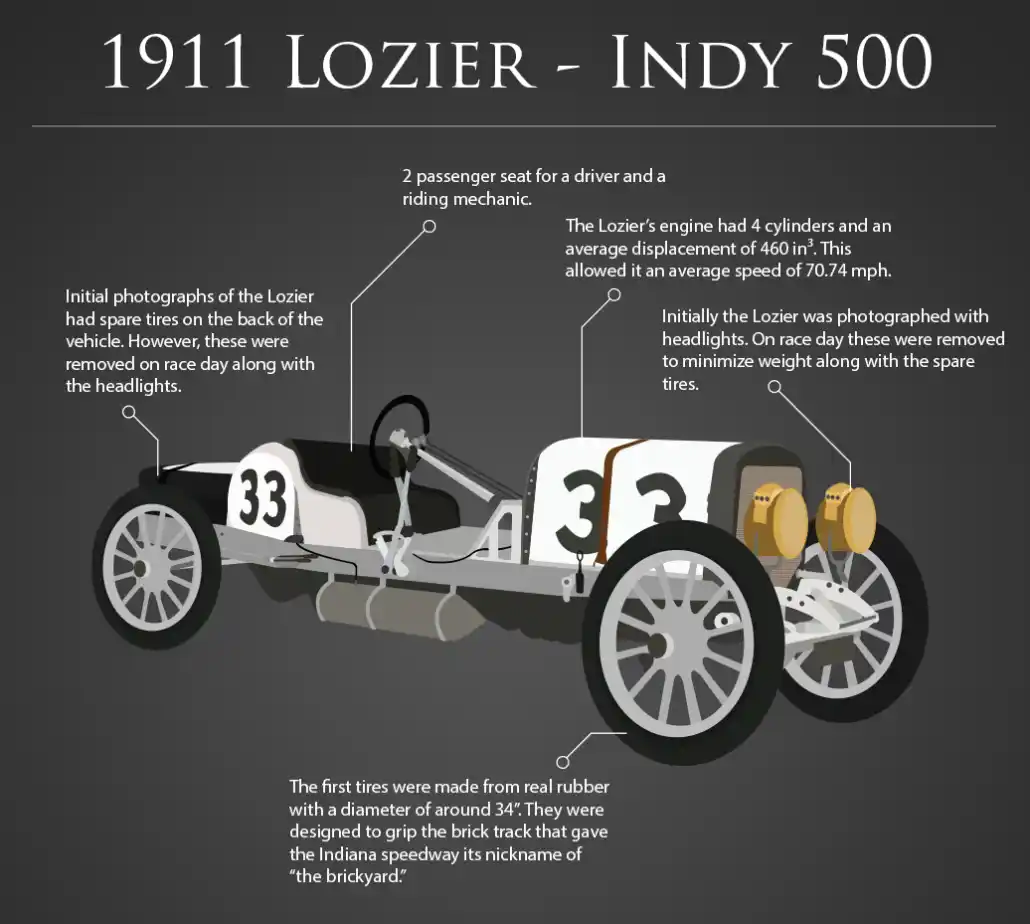
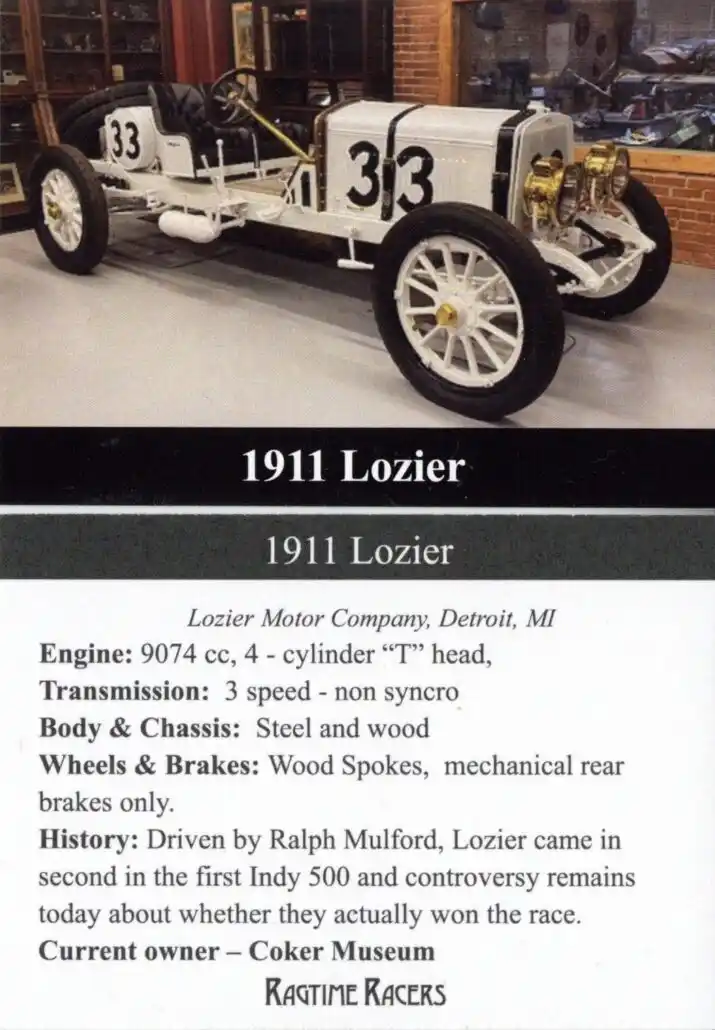
1911 LOZIER Indy Car Ragtime Racers Trading Card
